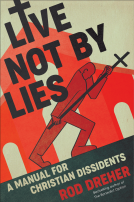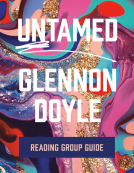
The Great Molasses Flood
Boston, 1919
by Deborah Kops
This title was previously available on NetGalley and is now archived.
Send NetGalley books directly to your Kindle or Kindle app
1
To read on a Kindle or Kindle app, please add kindle@netgalley.com as an approved email address to receive files in your Amazon account. Click here for step-by-step instructions.
2
Also find your Kindle email address within your Amazon account, and enter it here.
Pub Date Jan 06 2015 | Archive Date Jun 30 2015
Description
A Note From the Publisher
Unfortunately, this galley is not enabled for Kindle.
This is a paperback release of the original 2012 publication.
Unfortunately, this galley is not enabled for Kindle.
Advance Praise
Imagine a 40-foot wall of molasses turning a harborside neighborhood upside down.
It was a hopeful time in Boston. The worst of the Spanish influenza was over, World War I had just ended and Babe Ruth had helped the Red Sox win the World Series the previous fall. But on January 15, 1919, in Boston's North End, on a sunny, warm day, the molasses tank in the neighborhood blew. More than 2,300,000 gallons of molasses, weighing 13,000 tons, flowed down the street, uplifting houses, twisting railroad tracks and killing 21 people. Fallen elevated train tracks, dead horses, collapsed buildings and crushed cars made the areas look as though a tornado had come through. The smell of molasses in the neighborhood didn't fade until 1995, though the memory of the event has. Using firsthand testimony from the 40-volume transcript from Dorr v. U.S. Industrial Alcohol, the hearings that followed the event, Kops has done a fine job of resurrecting the story and recreating the day through third-person stories of the actual players. Had she retained some of the first-person accounts, she may have lent her narrative greater immediacy, but it is nevertheless an intriguing read. A useful map, abundant archival photographs and sidebars offering historical context complement the lively prose.
A fascinating account of a truly bizarre disaster.
Booklist
This book chronicles the catastrophic events resulting from the collapse of a large tank containing molasses in the North End neighborhood of Boston in 1919. The straightforward account centers on workers and area residents who either perished in the flood or miraculously survived. Those involved in the lengthy court case that followed also figure prominently in the narrative. Background information about the neighborhood, as well as the political activity that led to some of the speculations about the cause of the calamity, is expanded in numerous lengthy sidebars. A select number of well-placed archival photographs show the damage caused by the surge with the cleanup and rescue crews sloshing around in the aftermath. The combination of the sepia-toned photographs, the use of brown to highlight the chapter headings, and the choice of cream-colored paper gives this book a rich, elegant quality while staying consistent with the subject matter. Fictionalized accounts of the molasses flood can be found in Joan Hiatt Harlow's Joshua's Song (2001) and Blair Lent's picture book Molasses Flood (1992).
School Library JournalOn January 15, 1919, a two-million-gallon holding tank filled with molasses exploded, flooding Boston's North End near the port. In all, 21 people died in the disaster, and around 50 were injured. The sticky flood swamped the area, and cleanup proved difficult until it was discovered that seawater seemed to break it up. At that point, the judicious use of a fire boat aided the effort. Even though all the molasses was eventually gone, the smell persisted until 1995. This briskly paced recounting of the disaster focuses on the human element--the people involved, their lives disrupted and never the same thereafter. Covering not only the Molasses Flood, but the impact of Prohibition on businesses and the anarchist movement, the engaging narrative paints a very different picture of the Roaring Twenties than is typical. Of special interest, given the current national obsession with terrorism, is the number of deadly explosions set off by anarchists along the Eastern seaboard between 1919 and 1923. In a satisfying conclusion, the auditor pointed his finger firmly at the United States Industrial Alcohol Company, the owners of the tank, claiming that the company had done a poor job of building the tank and that it could withstand neither the weight of the molasses nor the pressure of the gas from fermentation. While this is an excellent study of the problems of unregulated industry, readership is nonetheless problematic. While there may be social-studies tie-ins, options for selling the title seem few. A fine, if slightly obscure, addition on a topic not previously covered in book form for this age range.
Available Editions
| EDITION | Other Format |
| ISBN | 9781580893497 |
| PRICE | $11.99 (USD) |
Links
Average rating from 11 members
Readers who liked this book also liked:
Rachel Joyce
Historical Fiction, Literary Fiction, Women's Fiction


















